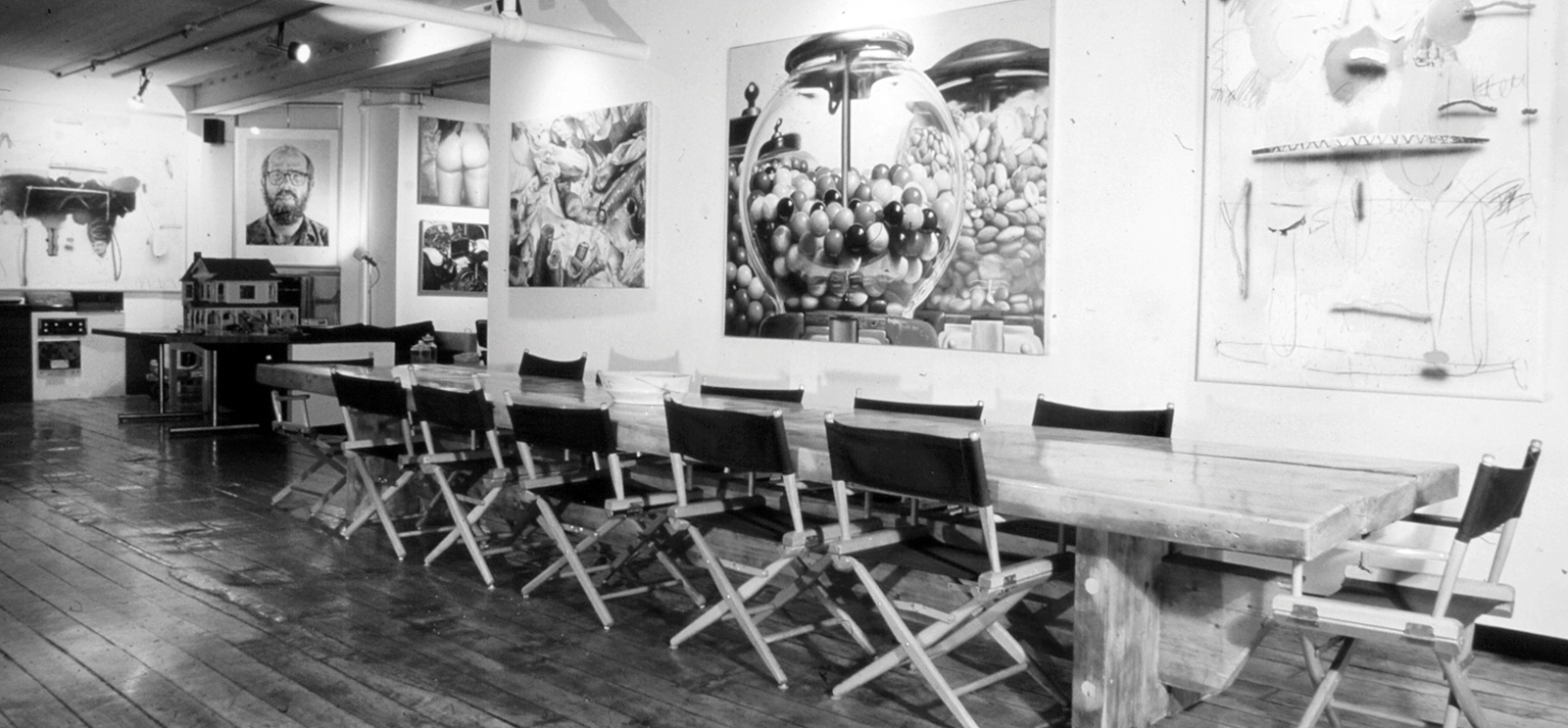
A SoHo loft. When artists protested their eviction from these now iconic buildings, Eleanor Roosevelt supported their cause, writing in 1961 that New Yorkers should not “stand idly by and allow artists to be dispersed.” (Photo courtesy Louis Meisel)
A new book explores artists’ role in the transformation of New York City’s SoHo neighborhood.
In SoHo today, fashion houses like Balenciaga and Burberry stand alongside the shrinking, yet still substantial, number of art galleries that first helped put the Manhattan neighborhood on the map.
As important to the neighborhood, though, are its famous cast-iron lofts. The beefy 19th-century buildings are relics of the industries—garment making, waste recycling, and printing, among others—that predominated in SoHo until the middle of the 20th century. While architecture and art are both famously characteristic of SoHo, fewer people know that the preservation of these buildings into the present day was in part the result of energetic activism by the community of artists who flourished in the area during the 1960s and ’70s.
In Lofts of SoHo: Gentrification, Art, and Industry in New York, 1950–1980, published in April by the University of Chicago Press, historian Aaron Shkuda, AB’03, AM’05, PhD’10, explores the ways these artists transformed the industrial neighborhood into a thriving space for the creation and display of new forms of artwork—and how that transformation eventually spun out of their control. Artists “invented the loft apartments, they organized politically to legalize this space, they changed the way that art was bought and sold in the city,” says Shkuda. His book aims to bring those contributions to the forefront of SoHo’s history.
Artists moved into SoHo in the ’50s and ’60s because it was cheap. They took over buildings abandoned by industries that had fled to the city’s outskirts, driven away by municipal planning and the impracticalities of manufacturing and transporting their materials in the too-small lofts and too-narrow streets of downtown.
Since city ordinances technically restricted the area to industry, the painters, sculptors, and performance artists who bought and rented lofts lived there illegally. That didn’t become a problem until the early ’60s, when a series of loft fires (though none in artists’ residences) turned the city’s attention to SoHo. “When they encountered loft residents for the first time,” Shkuda writes, “city officials did not celebrate the possible rebirth of a struggling industrial area at the hands of artists. Instead, they threatened them with eviction.”
Over time, artists began forming community organizations to campaign for rights as tenants, staging demonstrations and enlisting famous figures like Donald Judd (who lived in SoHo) and Roy Lichtenstein (who did not) to lobby on their behalf. They succeeded: the city eventually gave certified artists permission to live in the lofts, and, in 1973, the area became a landmark district. The designation protects the cast-iron lofts from being altered without a special dispensation.
Through the efforts of community organizations, which included walking tours for suburbanites, artists marketed the neighborhood to outsiders. They shared their loft-living lifestyle, with spacious rooms and minimalist decor. Trendsetting galleries also attracted visitors.
But success threatened SoHo’s identity, contributing to what Shkuda calls an “embourgeoisement” of the area, marked by a flood of upscale boutiques and restaurants. Some changes were seemingly innocuous, like an attempt to name a street after Greenwich Village artist Jackson Pollock—whom many residents considered an artistic rival. That effort evoked reactions ranging from “howling laughter to hot rage.” More seriously, loft prices rose rapidly: in 1970, the New York Times reported buildings selling for $150,000, five times their price a decade earlier. (Today, SoHo lofts sell for millions.) That hurt renters, who were forced out by increased rents or threats of eviction from landlords.
Fearing that these factors would push many of them out of the neighborhood, some artists began to campaign against further legalization in the mid-’70s, aiming instead to maintain a delicate equilibrium of vestigial industry and artists. The city “wasn’t really ready to go along with that, so they kept one area from north of Houston Street for artists only and they opened up TriBeCa [to nonartists], which is essentially now this bedroom community for Goldman Sachs,” says Shkuda. The year 1976 “is in a sense the beginning of the end of SoHo and of the loft as an artist-only phenomenon.”
Over the next couple of decades, the neighborhood became a tourist-heavy shopping district, and artists, voluntarily or not, began to relocate. “Some people get up and leave. They vote with their feet,” says Shkuda. Others hung on, mostly in cooperative buildings that they had jointly purchased on the cheap decades earlier. But that required a new kind of reinvention. Shkuda recounts his own interview with Jared Bark, an artist turned businessman who stayed in the neighborhood well after its transformation (he has since left). “He buys a loft, he buys another one, he has a framing business,” says Shkuda. “He freely admits that he becomes part of the bourgeois wing.”
